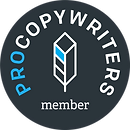In August 2022, Google announced its latest update in a string of changes to its ranking algorithm. Over the previous 12 months, Google has slowly been moving towards user-focused content and away from techniques that traditionally helped articles and other content to rank on the search engine.
Great, so Google is changing things up, again. Big woop. They just like to fuck with us, right? Right?
Well, not so fast. Does Google have a history of instating algorithmic requirements (while never really telling us), leading to a bunch of people doing the exact things they need to, only to have Google spend the next 5-10 years undoing all of those practices? Yes.
But this update is different? Also yes.
Let’s get into it.
What is the new Google update all about?
The August 2022 Google update is pushing a big focus on “helpful content”. So essentially, we’re looking to move away from content that directly ticks the boxes of search engine algorithms towards content that indirectly ticks the boxes for search engines.
That’s all it means from a logical perspective. But how do we put that into practice?
The key message coming from Google is to write for people first, not for the search engines.
And yes, you can achieve this by optimising your current content, rather than creating it from scratch.
UPDATE: Google have since released the follow up: 2023 Helpful Content Update which provides a shit ton more content guidelines.
What does “helpful content” really mean?
This has been dubbed the “helpful content” update. And Google’s own article on the update explains that this update is
“…part of a broader effort to ensure people see more original, helpful content, written by people, for people, in the search results”.
(formatting added by me).
[UPDATE: the “by people” bit was also removed from the 2023 update (linked above)]
These changes have been happening over the last 12 months. Many organisations have seen their websites penalised for content written several years ago with the aim to please search engines. And not to help people.
This is where the key difference in what is needed really comes in. Ranking on Google through the use of keywords and writing content that will really help people are two goals that no longer need to work at odds.
So while it has always been best practice to write content with the purpose of helping your audience, now it also helps your ranking.
How can we write the “helpful content” that Google wants?
Firstly, I want to address the elephant in the room. If you’re focusing on what Google wants, you have missed the point of the update.
Remember that quote from earlier? “Written by people, for people”. This tells us 2 things.
- This update is clamping down on AI-generated content and shitty content mills that exploit everyone involved – hooray!
- It’s time to stop saying you put your customers first and actually do it
Ok, so how can we write the “helpful content” our audience needs?
Now you’re asking the right question.
Here are 5 things you need to consider next time you’re writing some content for your website (in whatever form it takes):
1. Does your content demonstrate expertise or first-hand experience?
This is not the time for vapid content. Vapid content is like small talk. It is boring and unnecessary and has somehow become the norm. But no one likes it and no one returns to a person or a friendship in the hopes of more mentally stimulating small talk.
Demonstrating expertise requires well-thought-out, deliberate content. Draw on your experience, and dive into research to bridge the gaps in your knowledge. Ask other experts to chip in.
Does your content need to be 5000 words long to be useful? No. You just need to cover each topic you write about in enough depth that it is helpful (and people will consider you an authority on the topic).
2. Provide actionable advice and useful information
Can your readers come away from your content feeling like they know more than they did before they read it?
Your job is to educate people. So whether it’s a breakdown of the latest Google update (like this), the ins and outs of open source software for authoring eLearning content, or advice about accommodating neurodivergent folks at work*, what do your readers get out of it?
Provide solid advice and give them steps they can take towards reaching their own goals. They typed their query into Google for a reason. Your job as a writer is to answer it.
*and yes, they are all shameless plugs of some articles I’ve written for my clients.
3. Focus on specific topics
A scattergun approach to target as many keywords as possible isn’t going to work here. Consistently writing about related topics while helping your audience to see you as a credible source for information.
This is where topic clusters can really save your ass. Write around one or two topics.
Personally, I write a lot about SEO content writing and website copywriting, as they are the core of my business. For you, it could be IT support services, hybrid learning practices, or neurodivergent accommodations.
Whether you’re a one-person band, an SMB, or a multinational organisation, it pays to be known for something. If that’s not been part of your content strategy before now, this Google update is a great reason to start.
4. Quality over quantity
This applies to both keywords and the amount of content you publish. Calm down on the keywords. Yes, you still need them, but think about how often you need them.
Do they need to be in your title? Ideally yes
Do they need to be in every subheading? No
Do they need to be in your paragraph text? Yes
But do they need to be in every sentence? Or every paragraph? Or even every section? No
And when it comes to publishing content, Google used to favour regular website updates. That on its own won’t win you any support now. Publish a blog every day, sure. But only if it is high quality. And if you’re writing a blog a day, it probably isn’t.
Dial back on how often you publish, and instead focus on publishing content that is well-researched, delivered by experts, and robust enough to be helpful.
Robust, but clearly formatted. Always.
More on the importance of content formatting here.
5. Write for people first, and for Google second
And finally, the most important piece of the puzzle. But what does writing for people first really mean?
The main thing is that you need to be answering people’s questions. This is where tools like Also Asked provide an absolute goldmine of information.
People go to Google (and other search engines) looking for answers. Do you have them? Do you even know what your potential customers are answering?
Take this as an opportunity to go back to your customer persona, ideal customer profiles, etc. What are their key problems? When you speak to customers (or even better, ex-customers or failed prospects), what questions are they asking?
If you don’t know, now is the time to find out. Not just for your rankings. Investing in customer insights will also help you develop your product or service.
A note on keywords and the importance of data
Since the update was announced, writers everywhere have rejoiced. And I’ve certainly heard some concern from SEO consultants. I want to make something really clear.
People-first does not mean people-only.
We still need, keyword research and search intent data to direct our content strategy. However, this update means that more than ever before, the use of keywords must feel natural in the content.
And critically, we must be answering the queries people type into Google.


